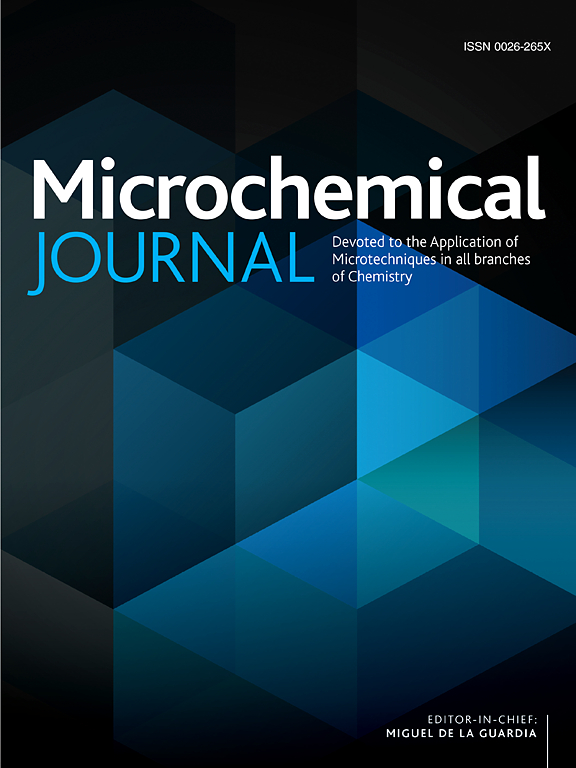One-step electrodeposition of gold nanospheres/reduced graphene oxide for adsorptive stripping voltammetric determination of iron in seawater
IF 4.9
2区 化学
Q1 CHEMISTRY, ANALYTICAL
引用次数: 0
Abstract
An effective voltammetric method for determination of iron (Fe) in seawater was proposed based on the gold nanospheres (AuNSs)/electrochemically reduced graphene oxide (E-rGO) modified glassy carbon electrode (GCE). The AuNSs/E-rGO/GCE was prepared through a simple one-step electrodeposition method. E-rGO provides perfect conductivity, larger electrode surface, and more active sites for AuNSs which possess the ability to accelerate electron transfer and excellent electro-catalytic performance for the voltammetric determination of Fe3+. Benefiting from the synergistic effects of E-rGO and AuNSs, the AuNSs/E-rGO/GCE exhibited excellent performance for the voltammetric determination of Fe3+. Adsorptive stripping voltammetry was adopted for Fe3+ determination using the fabricated AuNSs/E-rGO/GCE with 1-(2-Pyridylazo)-2-naphthol as the complexing ligand. Under the optimal conditions, the AuNSs/E-rGO/GCE showed a limit of detection was 1.5 nM and linear range was 5 ∼ 450 nM for Fe3+ determination. In addition, the AuNSs/E-rGO/GCE has been successfully applied to determine the total dissolved Fe in real seawater samples.

求助全文
约1分钟内获得全文
求助全文
来源期刊

Microchemical Journal
化学-分析化学
CiteScore
8.70
自引率
8.30%
发文量
1131
审稿时长
1.9 months
期刊介绍:
The Microchemical Journal is a peer reviewed journal devoted to all aspects and phases of analytical chemistry and chemical analysis. The Microchemical Journal publishes articles which are at the forefront of modern analytical chemistry and cover innovations in the techniques to the finest possible limits. This includes fundamental aspects, instrumentation, new developments, innovative and novel methods and applications including environmental and clinical field.
Traditional classical analytical methods such as spectrophotometry and titrimetry as well as established instrumentation methods such as flame and graphite furnace atomic absorption spectrometry, gas chromatography, and modified glassy or carbon electrode electrochemical methods will be considered, provided they show significant improvements and novelty compared to the established methods.
 求助内容:
求助内容: 应助结果提醒方式:
应助结果提醒方式:


